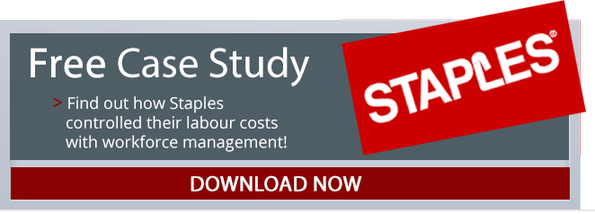 If you're just starting your search for a new hire, the possibilities are endless. There are resumes galore, opportunities for excellence and an excitement through the office about who will be hired next. Once you start the process though, you may find yourself less enthused. Potential hires don't have the right qualifications or experience, the interviews go poorly and employees aren't thrilled with the applicants. Do you hire "good enough" or wait for "great?” Before you offer a job to the next "good enough," consider the true cost of a bad hire.
If you're just starting your search for a new hire, the possibilities are endless. There are resumes galore, opportunities for excellence and an excitement through the office about who will be hired next. Once you start the process though, you may find yourself less enthused. Potential hires don't have the right qualifications or experience, the interviews go poorly and employees aren't thrilled with the applicants. Do you hire "good enough" or wait for "great?” Before you offer a job to the next "good enough," consider the true cost of a bad hire.
Money
Financially, a bad hire can wreak havoc on a company. At the bare minimum, it's estimated that a bad hire costs a company thirty percent of the employee's annual salary. For a $40,000 a year position, that means $12,000 is down the drain and counting. At most, that cost skyrockets to six times the employee's salary or $240,000 for one hiring mistake.
Those costs don't just come from the position being occupied by a poor hiring choice. It comes from employees who need to sit in on the interview process, productivity lost during training, employee testing, orientation and termination costs such as COBRA. If employers lose only thirty percent of a bad hiring decision's annual salary, it's a fairly clean break. Particularly contentious hires can cost a company thousands in unsubstantiated lawsuits and unemployment costs. Money is the number one reason employers should think twice about choosing the wrong person to fill a position.
Morale and Fatigue
A less concrete cost of hiring the wrong person is employee morale and fatigue. Training takes time and effort and when that effort is expended for someone who can't or won't perform the job, this creates hostility in the workplace. Additionally, employees who have had to carry the burden of an empty position may become embittered and disenfranchised if the person that's hired quickly quits or is ineffective at the position.
Many managers rush the hiring process to avoid burned out employees and decreased morale. Their mindset is that the quicker the position is filled, the less stress current employees will experience. While employees are stressed when positions are unfilled, a bad hire compounds that stress by offering no end-point to the extra work and aggravation.
Time
No matter which industry you work in, time is precious. There aren't enough hours in the day for production, documentation or innovation and hiring is a huge drain on your most valuable resource: time. New employees require time to make effective teammates. Even someone with twenty years of experience requires at minimum six months to learn the ins and outs of their new position. This time takes away from everyday tasks and when it's expended on a bad hire, it's time wasted.
Additionally, a bad hiring decision can cost supervisors nearly one day per week managing those bad hires. If your poor hire makes it to the one year mark, that means over six weeks of time lost correcting poor performance. Once training is over, the time loss associated with a poor hire doesn't just end.
A bad hire can sideline a business and it's important for managers to weigh the negative effects of an unfilled position against the position being filled by the wrong person. Often, it's better for managers to alleviate the stress of an empty position by evenly delegating tasks and prioritizing workload rather than rushing to hire the wrong candidate. Next time you're filling a position at your business, weigh all the costs of a bad hire and decide whether you want a good candidate or a great candidate.
